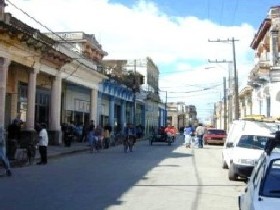|
CIEGO DE ÁVILA
 Ciego de Avila is the capital of a province whose development depends mainly on agriculture and tourism. The first settlements date back to the XVI century when a notable aborigine population started to inhabit the area.
The area has a modern international airport and a Main Theatre (Teatro Principal), built in 1927, while the Church of San Eugenio de la Palma (Iglesia de San Eugenio de la Palma), the city’s patron, appears as one of the most important and ancient buildings in the city.
Its lands are flat, maybe the flattest in Cuba. There are good pineapple crops, a fruit considered by Cubans as the Queen of all fruits.
The city started to expand around Marti Park, although there are no documents that attest to its construction. The most important meeting place is the corner of the Water House (Casa de Agua), which offers mineral water, as well as homemade refreshments and fruit juices.
Ciego de Avila is the capital of a province whose development depends mainly on agriculture and tourism. The first settlements date back to the XVI century when a notable aborigine population started to inhabit the area.
The area has a modern international airport and a Main Theatre (Teatro Principal), built in 1927, while the Church of San Eugenio de la Palma (Iglesia de San Eugenio de la Palma), the city’s patron, appears as one of the most important and ancient buildings in the city.
Its lands are flat, maybe the flattest in Cuba. There are good pineapple crops, a fruit considered by Cubans as the Queen of all fruits.
The city started to expand around Marti Park, although there are no documents that attest to its construction. The most important meeting place is the corner of the Water House (Casa de Agua), which offers mineral water, as well as homemade refreshments and fruit juices.
Pour davantage d'information:
www.cuba-ciegodeavila.com
|